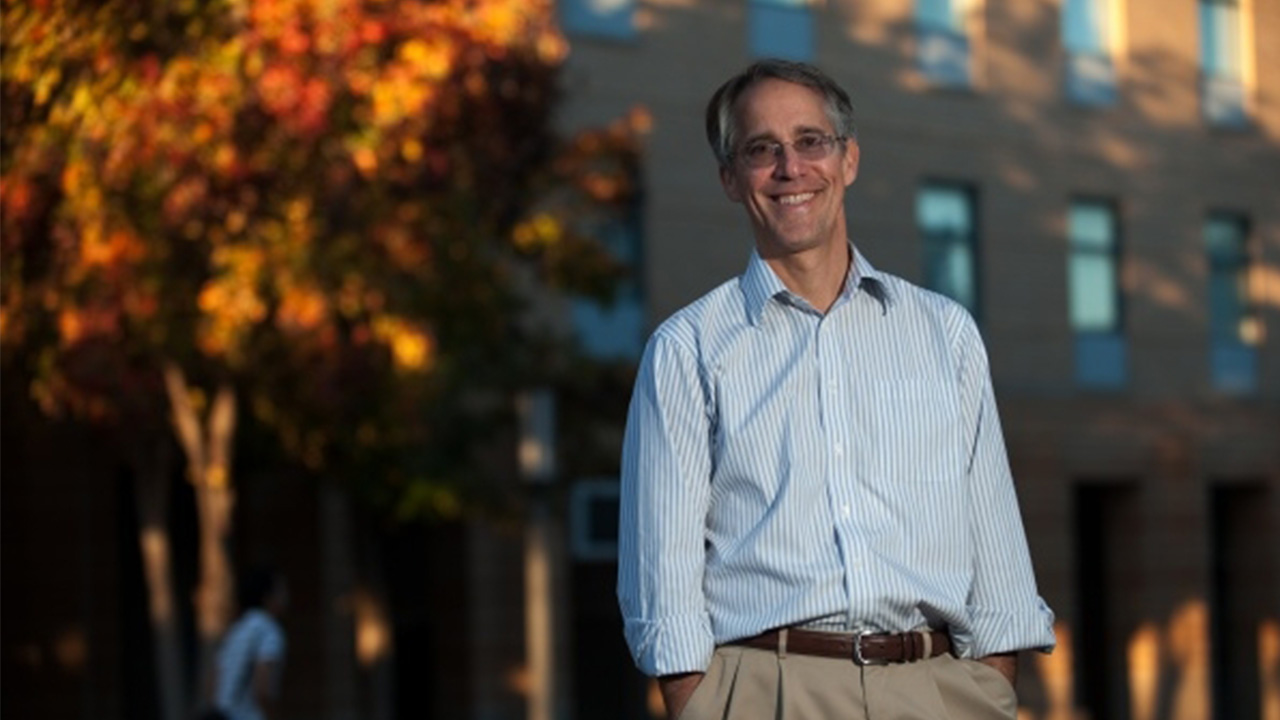 Professor Jeffrey Wasserstrom (华志坚) , Chancellor’s Professor of History at the University of California, Irvine。
Professor Jeffrey Wasserstrom (华志坚) , Chancellor’s Professor of History at the University of California, Irvine。
Professor Jeffrey Wasserstrom of theUniversity of California, Irvine (UCI) was recently invited to Shanghai International Studies University (SISU) to give a lecture on American Study of China: Changes and Continuities since the Late 1970s. During his lecture, he discussed with SISU student audience on the general trends in American studies of Chinese modern history since the late 1970s.
Jeffrey Wasserstromis Chancellor’s Professor of History at the University of California, Irvine, the author of books such as China in the 21st Century: what everyone needs to know. He holds a master’s degree from Harvard, a doctorate from Berkeley, and has studied for one year at Fudan University in China.
“The late 1970s is a turning point for American studies on China and the bilateral relations between the two countries,” said Prof. Wasserstrom. “Before 1979, many American scholars on Chinese modern history did not have easy access to China Mainland, and nor could they interview the people who have lived through the recent Chinese past.”
In the 1970s some of the subjects Americans tended to study were related to the sources accessible outside China Mainland, and they also tried to figure out some questions that they thought were perplexing, like the question on why China had failed to be able to modernize since the late 19th century when Japan was growing into a modernized country, he said.
“Most of these approaches were either from international dimension, or were dealing with big events like revolution, or focusing on the personal lives of famous individuals, such as the revolutionary figures Sun Yat-sen or Liang Qichao,” Prof. Wasserstrom pointed.
Once scholars had access to resources on China Mainland, there was a tendency to China-centered study of China. “Instead of framing questions simply from American side, like why western ideas did not take hold in China or why Christianity had not succeed in converting all people in China, American scholars tried to think China from inside, and figure out what questions are full most on people’s mind.”
Prof. Wasserstrom also quoted words from Lu Hanqiao to summarize the moves of western studies on China, specifically “from external work to internal work, from big subjects to small things, and from top down to bottom up.”
In the 1980s, there were a lot of work on the lives of ordinary people, rather than biographies of famous people, and even when scholars were studying some big events, they would try to see them from the bottom. “For example, regarding the Yihetuan Movement, studies began to concentrate on the life pattern of North China that had led those young men to join the anti-Christian movement instead of questioning what were the diplomatic relations between the west and China during that period.” he commented that “there is a move to social history.” Social history means how ordinary people live in big changes, and Prof. Wasserstrom said that women and workers began to be regarded as social groups for studies in the 1980s.
When it comes to the 1990s, Prof. Wasserstrom explained “ If the 1980s were marked by a social group that has been ignored too long, then the 1990s were marked that here a category that we have been taken for granted, and let’s look at how it actually worked.” He gave an example that the significant book Discourse of Race on Chinese History explains how the racial groups diverged in Chinese history and how men and women differed, and it was a shift to look at history in a new way.
From 2000 to 2010, there were a couple trends on American study of China, and according to Prof. Wasserstrom, one was that American scholars paid more attention to China on its own term, bringing the international path in but from a different way. “In one of the greatest books The Great Divergence, the author argued that you can see many parallel events happening in the most urbanized parts in China and in Great Britain to explain the question why the two paths in the world in someway overlapped, but someway diverged.” “And in general, the trend moved toward globalization, crossing national borders.”
In conclusion, Professor Wasserstrom introduced his own work on the Yihetuan Movement, and how he approached the event from a global frame. “Instead of the tensions between the East and the West, I thought about the meanings of the event to people in different worlds, like how they thought about Yihetuan and Beijing among the Eight-Nation Alliance,” he said.



